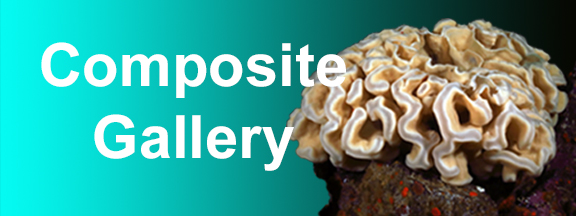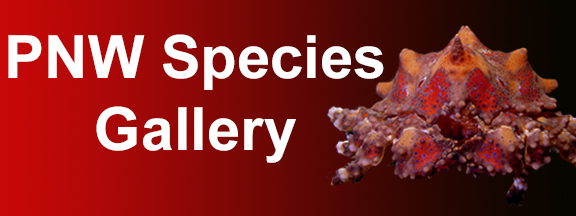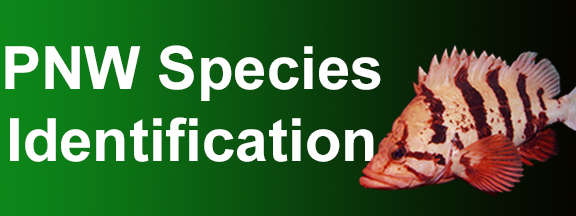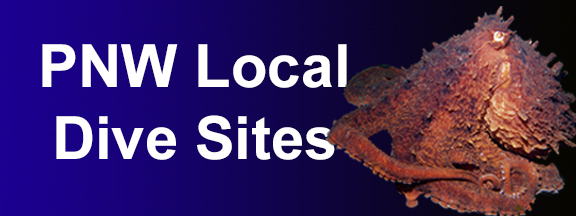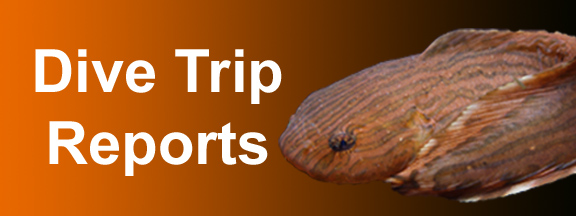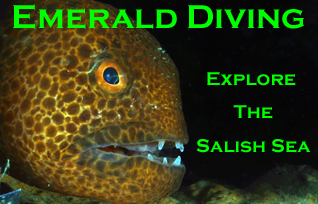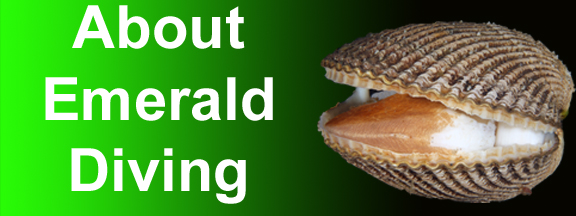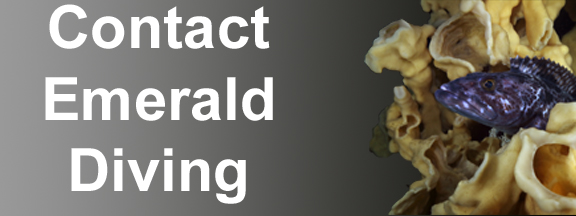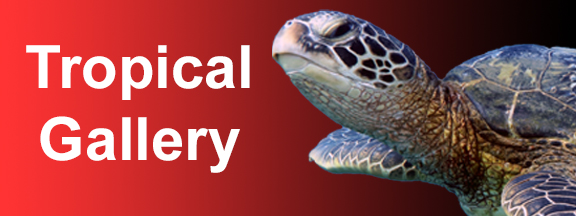

Dive Reports
Emerald Diving
Explore the coastal and inland waters of
Washington and BC
Explore the coastal and inland waters of
Washington and BC
Emerald Diving
Explore the coastal and inland waters of
Washington and BC
Explore the coastal and inland waters of
Washington and BC
Discovery Passage, BC: September 2015










Another great attribute of Discovery Passage diving is most of the dive sites are very close to Campbell River. The site furthest away was the HMCS Columbia, which lies in a small bay about 6 miles to the north. All the other sites are within three miles of the Campbell River boat launch.
I have heard fantastic things about the amount of color and density of marine life in this area. I can report to you these claims are true. But they are also a bit deceiving. Let me explain site by site.
HMCS Columbia: This is a sister ship to the HMCS Saskatchewan. She is a 366’ Canadian destroyer escort that was sunken in 1995. She lies in approximately 100 feet of water and is listing to port. This was the first dive we did because it was not in a current intensive area and we could dive it off-slack. Being submerged for 20 years, I expected her to be fairly vibrant and consumed with marine life. That simply is not the case. Other than a legion of brittle stars occupying her decks and superstructure and the occasional patrolling quillback and copper rockfish, she is disappointingly barren. I found one small cloud sponge on her, but the lack of current in this area apparently equates to a distinct lack of marine life. It was a good warm up dive, but that’s about it. Mark this site off my “to dive” list.
Steep Island: The wall on the northwest side of Steep Island was easily located with our depth sounder from the boat. We then dove the wall at predicted slack on our first day. This site’s claim to fame is the massive colony of brilliant purple and red feather duster worms residing off the point and extending down the west side of the wall. Tens if not hundreds of thousands or worms make up the colony that covers the wall to depths of about 80 feet. Kelp greenling and small lingcod use the worms as resting perches...it is quite a spectacle. The worms then give way to a strawberry anemones, yellow encrusting sponges, white sponges, orange cup corals, golden hydroids, and sea urchins. What was missing from this invertebrate rich site are robust fish populations. Fish populations in the area were limited to the sparse populations of kelp greenling, lingcod, painted greenlings, small quillbacks, a few coppers, even fewer tiger rockfish, and small sculpins. We entered the water one hour before slack (slack before ebb) and had time to do two dives with manageable current.
Copper Cliffs: This is another of the marque dive site in Discovery Passage that is clearly distinguished topside by huge bluffs that leach a green copper stain in places. In talking with the locals that dive here, they weren’t sure why this site has earned marque status. One great characteristic of this site is it is divable off-slack. I did two dives on this site, both approximately 3 hours after slack before ebb and had very manageable conditions. The current picked up both times while at depth, but then subsided again. My understanding is this site is in a back-eddy of the main channel current, which explains why the current would stop, start, and change directions occasionally.
This dive is fair, but nowhere near world-class. The wall itself is sheer, solid, and relatively uninteresting and about 80 to 90 feet to the bottom. I started both dives mid-wall andwent north on the first dive, and south on the second. To the north, large boulders and rocks line the base of the wall. To the south, the boulders give way to a giant rockslide that works its way up the way to about 50 feet of the surface. The rocks on the rockslide sport some populations of orange cup-corals that abruptly give way to strawberry anemones, although the aggregations are not dense. Yellow and white sponges also occupy the debris field, as do more small lingcod, small quillback rockfish, copper rockfish, and the occasional shy tiger rockfish. A large Puget Sound king crab kept me entertained for a good 5 minutes on the second dive as I watched it scale the boulder pile. I also got to hang briefly with a school of herring under the dive boat at the end of the first dive. And I can’t forget the urchins. They are everywhere. Purple, green, and red...your choice.
I have heard fantastic things about the amount of color and density of marine life in this area. I can report to you these claims are true. But they are also a bit deceiving. Let me explain site by site.
HMCS Columbia: This is a sister ship to the HMCS Saskatchewan. She is a 366’ Canadian destroyer escort that was sunken in 1995. She lies in approximately 100 feet of water and is listing to port. This was the first dive we did because it was not in a current intensive area and we could dive it off-slack. Being submerged for 20 years, I expected her to be fairly vibrant and consumed with marine life. That simply is not the case. Other than a legion of brittle stars occupying her decks and superstructure and the occasional patrolling quillback and copper rockfish, she is disappointingly barren. I found one small cloud sponge on her, but the lack of current in this area apparently equates to a distinct lack of marine life. It was a good warm up dive, but that’s about it. Mark this site off my “to dive” list.
Steep Island: The wall on the northwest side of Steep Island was easily located with our depth sounder from the boat. We then dove the wall at predicted slack on our first day. This site’s claim to fame is the massive colony of brilliant purple and red feather duster worms residing off the point and extending down the west side of the wall. Tens if not hundreds of thousands or worms make up the colony that covers the wall to depths of about 80 feet. Kelp greenling and small lingcod use the worms as resting perches...it is quite a spectacle. The worms then give way to a strawberry anemones, yellow encrusting sponges, white sponges, orange cup corals, golden hydroids, and sea urchins. What was missing from this invertebrate rich site are robust fish populations. Fish populations in the area were limited to the sparse populations of kelp greenling, lingcod, painted greenlings, small quillbacks, a few coppers, even fewer tiger rockfish, and small sculpins. We entered the water one hour before slack (slack before ebb) and had time to do two dives with manageable current.
Copper Cliffs: This is another of the marque dive site in Discovery Passage that is clearly distinguished topside by huge bluffs that leach a green copper stain in places. In talking with the locals that dive here, they weren’t sure why this site has earned marque status. One great characteristic of this site is it is divable off-slack. I did two dives on this site, both approximately 3 hours after slack before ebb and had very manageable conditions. The current picked up both times while at depth, but then subsided again. My understanding is this site is in a back-eddy of the main channel current, which explains why the current would stop, start, and change directions occasionally.
This dive is fair, but nowhere near world-class. The wall itself is sheer, solid, and relatively uninteresting and about 80 to 90 feet to the bottom. I started both dives mid-wall andwent north on the first dive, and south on the second. To the north, large boulders and rocks line the base of the wall. To the south, the boulders give way to a giant rockslide that works its way up the way to about 50 feet of the surface. The rocks on the rockslide sport some populations of orange cup-corals that abruptly give way to strawberry anemones, although the aggregations are not dense. Yellow and white sponges also occupy the debris field, as do more small lingcod, small quillback rockfish, copper rockfish, and the occasional shy tiger rockfish. A large Puget Sound king crab kept me entertained for a good 5 minutes on the second dive as I watched it scale the boulder pile. I also got to hang briefly with a school of herring under the dive boat at the end of the first dive. And I can’t forget the urchins. They are everywhere. Purple, green, and red...your choice.
April Point: I didn’t do this dive, but Jon did. We did it on a slack before flood. Jon ended up getting literally blown off the wall by the current and I picked him up 5 minutes later in 300 feet of water. He stated the dive was OK, but not as good as the other sites. Yes, the currents in Discovery Passage mean serious business.
Row N Be Damned: Every experienced Discover Passage diver I talked with prior to this trip exclaimed this was the best dive in the area. I emphatically agree and ended up doing it four times. We actually had different descriptions and conflicting GPS coordinates for this site. However, while scoping what we thought was the site, we saw a dive charter to the south putting divers in the water. We got talking to him and he set us straight.
The best part of the site lies off the south end of the bluff on the north side of Quathiaski Cove. Grouse Island is immediately to the south. Better yet, use these GPS coordinates:
The first part of this dive is uninteresting unless you like urchins, and lots of them. The good news is you can pick your color if you like urchins – red, purple, or green – they are all there in abundance. Below about 40 feet, the urchin infestation gives way to strawberry anemones aggregations. Then the sponges really get into the game a bit deeper – large yellow sulfer sponges, trumpet sponges, finger sponges, and several species of white sponges – some with volcano-like vents and others with wispy formations along the top. The bottom at the entry point has a moderate slope, but is relatively featureless structure-wise until you get 50-100 yards further north. In the 50-100 fsw range, large boulders, rocks, and some ledges appear. This is the best part of the dive. After the boulder stop, it is back to a relatively flat wall, although it is still heavy encrusted. A couple hundred yards to the north, the wall gives way to a valley that works up-slope. During the dives we did while the current was running heavy to the north, we ended up in this valley where the current subsided.
Currents run north on the flood and south on the ebb here. From my limited experience, the current seems to turn at this site early, at least on slack before flood. Even with that, Jon and I were able to get back to back dives in at this site on three consecutive days, keeping in mind we were diving relatively weak exchanges. The explosive color garnished by the strawberry anemones and various sponges make this site unique. However, other many other species use this rich colorful carpet as sanctuary.
Nudibranch species were limited small San Diego, magnificently large Anisodoris noblis (sea lemons), small red-gilled aeolids, and very sparsely populated spotted catalina, white dorids, and white nudibranchs.
Fish species were also limited to those already mentioned. We also found a few Puget Sound king crabs and countless decorator crabs – most of which scurry about with assorted strawberry anemones attached to their carapace. Jon and I each found one giant Pacific octopus at this site – disappointingly the only octopus we saw the entire trip. The one I saw was about 3 feet in length. The moment it identified me, it extended me a sample of it’s finest ink and hastily made a B-line for the nearest rock. What happened to Canadian hospitality?
Overall, I really enjoyed experiencing this area. However, it is just missing something – namely fish and kelp. And diversity. There is almost no kelp at these sites and the fish stocks are very thin. When diving Row N Be Damned, I felt I was in a museum by myself observing beautiful paintings, however, there was no one around. It was almost lonely. In the shallows, there was no kelp to pick through and hang in with the black rockfish. Just urchins, a few seastars, and perch (shiner, striped seaperch, and small pile perch). In my opinion, this area doesn’t hold a candle to Port Hardy or Neah Bay. If I ever have an overwhelming hankering to dive with strawberry anemones…or urchins…I may back. If you want to dive this area, my recommendation is hire the local charter as currents are wicked in this area and take a couple days to do four dives. After 8 dives, I had more than my share. I’ll be back at Neah next year.
Row N Be Damned: Every experienced Discover Passage diver I talked with prior to this trip exclaimed this was the best dive in the area. I emphatically agree and ended up doing it four times. We actually had different descriptions and conflicting GPS coordinates for this site. However, while scoping what we thought was the site, we saw a dive charter to the south putting divers in the water. We got talking to him and he set us straight.
The best part of the site lies off the south end of the bluff on the north side of Quathiaski Cove. Grouse Island is immediately to the south. Better yet, use these GPS coordinates:
The first part of this dive is uninteresting unless you like urchins, and lots of them. The good news is you can pick your color if you like urchins – red, purple, or green – they are all there in abundance. Below about 40 feet, the urchin infestation gives way to strawberry anemones aggregations. Then the sponges really get into the game a bit deeper – large yellow sulfer sponges, trumpet sponges, finger sponges, and several species of white sponges – some with volcano-like vents and others with wispy formations along the top. The bottom at the entry point has a moderate slope, but is relatively featureless structure-wise until you get 50-100 yards further north. In the 50-100 fsw range, large boulders, rocks, and some ledges appear. This is the best part of the dive. After the boulder stop, it is back to a relatively flat wall, although it is still heavy encrusted. A couple hundred yards to the north, the wall gives way to a valley that works up-slope. During the dives we did while the current was running heavy to the north, we ended up in this valley where the current subsided.
Currents run north on the flood and south on the ebb here. From my limited experience, the current seems to turn at this site early, at least on slack before flood. Even with that, Jon and I were able to get back to back dives in at this site on three consecutive days, keeping in mind we were diving relatively weak exchanges. The explosive color garnished by the strawberry anemones and various sponges make this site unique. However, other many other species use this rich colorful carpet as sanctuary.
Nudibranch species were limited small San Diego, magnificently large Anisodoris noblis (sea lemons), small red-gilled aeolids, and very sparsely populated spotted catalina, white dorids, and white nudibranchs.
Fish species were also limited to those already mentioned. We also found a few Puget Sound king crabs and countless decorator crabs – most of which scurry about with assorted strawberry anemones attached to their carapace. Jon and I each found one giant Pacific octopus at this site – disappointingly the only octopus we saw the entire trip. The one I saw was about 3 feet in length. The moment it identified me, it extended me a sample of it’s finest ink and hastily made a B-line for the nearest rock. What happened to Canadian hospitality?
Overall, I really enjoyed experiencing this area. However, it is just missing something – namely fish and kelp. And diversity. There is almost no kelp at these sites and the fish stocks are very thin. When diving Row N Be Damned, I felt I was in a museum by myself observing beautiful paintings, however, there was no one around. It was almost lonely. In the shallows, there was no kelp to pick through and hang in with the black rockfish. Just urchins, a few seastars, and perch (shiner, striped seaperch, and small pile perch). In my opinion, this area doesn’t hold a candle to Port Hardy or Neah Bay. If I ever have an overwhelming hankering to dive with strawberry anemones…or urchins…I may back. If you want to dive this area, my recommendation is hire the local charter as currents are wicked in this area and take a couple days to do four dives. After 8 dives, I had more than my share. I’ll be back at Neah next year.



Discovery Passage. Quadra Island. Campbell River.
Being an avid NW cold water diver since 1996, I have heard nothing but great things about the diving in this area. So when Jon and I decided to take a year off our annual Neah Bay diving pilgrimage, we quickly settled on Quadra Island as the top choice as neither of us had been diving here. Being almost exactly half way between my two favorite cold water diving destinations (Neah Bay and the Port Hardy area), I anticipated the diving would be spectacular.
Talking with some Quadra Island dive veterans, I quickly learned the “great” diving was all in Discovery Passage. The town of Campbell River on the west side of the passage and Quadra Island on the east. The Seymour Narrows make up the northern reaches of Discovery Passage where currents can reach 14 knots or more. The passage empties into the Strait of Georgia to the south.
I referenced the Seymour Narrows current charts to pick a weekend when currents were “minimal”, which in this case meant only 6 to 9 knots during the day. We opted to go in September instead of August as underwater visibility can be sketchy in August. Of course, the trade-off is the sunshine and calm seas are harder to come by in September. But being divers, I would gladly sacrifice topside comfort for visibility beneath the waves. So on a sunny September day, Jon and I hooked up my boat to his truck and headed off for our adventure north. Little did we know we would not see the sun again on this trip…but that is the Pacific Northwest in September. Well, any month, actually.
One great appeals of diving in this area is accommodations are wonderful. We stayed in Campbell River at Driftwood by the Sea Inn and rented one of their impeccably clean and well run cabins. The friendly staff at Beaver Aquatics was able to give us tips for diving the best sites and were able to provide Nitrox fills. A number of good restaurants and chain grocery stores are also found in Campbell River, although many of the restaurants close around 8 PM and are not open Sundays. Compared to Neah Bay, logistics for Campbell River are bountiful and well appreciated.
Being an avid NW cold water diver since 1996, I have heard nothing but great things about the diving in this area. So when Jon and I decided to take a year off our annual Neah Bay diving pilgrimage, we quickly settled on Quadra Island as the top choice as neither of us had been diving here. Being almost exactly half way between my two favorite cold water diving destinations (Neah Bay and the Port Hardy area), I anticipated the diving would be spectacular.
Talking with some Quadra Island dive veterans, I quickly learned the “great” diving was all in Discovery Passage. The town of Campbell River on the west side of the passage and Quadra Island on the east. The Seymour Narrows make up the northern reaches of Discovery Passage where currents can reach 14 knots or more. The passage empties into the Strait of Georgia to the south.
I referenced the Seymour Narrows current charts to pick a weekend when currents were “minimal”, which in this case meant only 6 to 9 knots during the day. We opted to go in September instead of August as underwater visibility can be sketchy in August. Of course, the trade-off is the sunshine and calm seas are harder to come by in September. But being divers, I would gladly sacrifice topside comfort for visibility beneath the waves. So on a sunny September day, Jon and I hooked up my boat to his truck and headed off for our adventure north. Little did we know we would not see the sun again on this trip…but that is the Pacific Northwest in September. Well, any month, actually.
One great appeals of diving in this area is accommodations are wonderful. We stayed in Campbell River at Driftwood by the Sea Inn and rented one of their impeccably clean and well run cabins. The friendly staff at Beaver Aquatics was able to give us tips for diving the best sites and were able to provide Nitrox fills. A number of good restaurants and chain grocery stores are also found in Campbell River, although many of the restaurants close around 8 PM and are not open Sundays. Compared to Neah Bay, logistics for Campbell River are bountiful and well appreciated.

